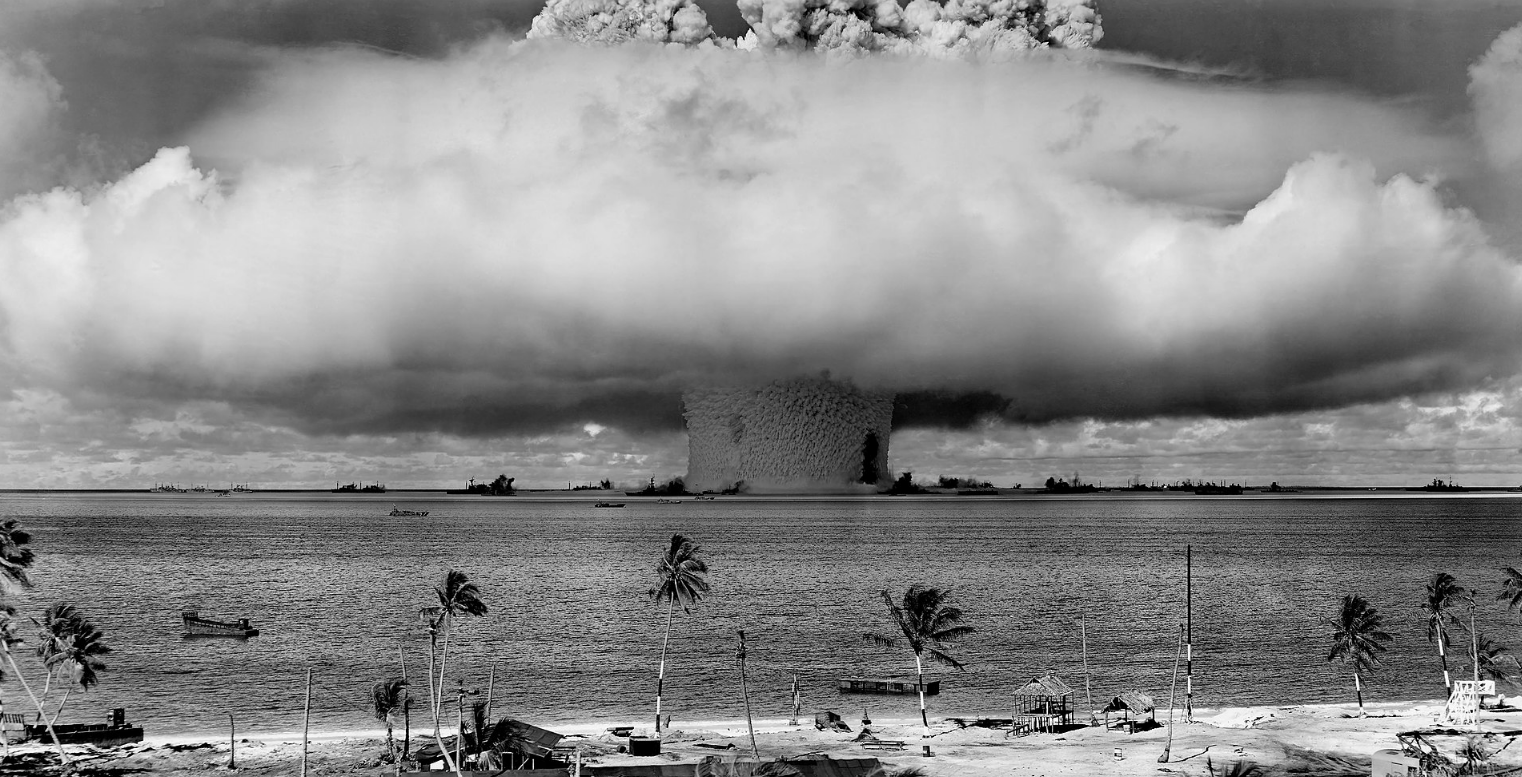During the Cold War, when messing around with nuclear energy was all the rage, the US military left a legacy of radioactive debris at a few different sites around the world. Much of the fallout was kept at bay or contained – well, depending on who you ask – but climate change is now threatening to reawaken these radioactive boogeymen once again.
A new report by the US Government Accountability Office has highlighted three regions across the world where US-made radioactive contamination could be disturbed by climate change.
Despite being the result of US actions, none of the three troublesome sites are found in the US; they are found in the Marshall Islands in the Pacific, the Spanish town of Palomares, and the site of a former Arctic military scientific research base in Greenland.
In light of this dramatic shift to the environment, the report argues that the US might have to rethink the way it manages some of these sites.
Nuclear Waste On Ice
Between 1959 and 1967, the US military ran a scientific research base in Greenland called Camp Century. It was the home of Project Iceworm, a supervillain-esque plan to install a network of nuclear missile launch sites hidden amid the Arctic Ice Sheet. They were also looking into the feasibility of operating a base under the ice in Greenland.
While both schemes ultimately didn’t work out, the camp was powered by a small nuclear reactor, which has left its own radioactive footprint. The site and its waste were abandoned in 1967 with the hope it would be buried by perpetual snowfall.
A recent review found that the liquid wastes were buried at a depth of 32 meters (104 feet) in 2017, deeper than it was in 1964, meaning the plan to entomb the radiation in ice and snow had worked – but conditions in Greenland are starting to radically change.
Given the rate of warming temperatures and thawing ice, another study reported that contamination likely would remain immobile until 2100. After that, things could get messy. Even if the debris isn’t totally exposed to the elements, warming temperatures are likely to increase meltwater leakage and up risk of radiation seeping into the surrounding environment.
Other studies have come to more worrying conclusions. In 2016, scientists found that the ice sheet at Camp Century could effectively collapse within 75 years under a business-as-usual scenario in greenhouse gas emissions. If that happens, the reports, it would “guarantee the eventual remobilization of physical, chemical, biological, and radiological wastes abandoned at the site.”
It’s particularly worrying as neither the US, Greenland, nor Denmark (which controls Greenland) have suggested any plans for cleaning up the contamination beneath Camp Century.
“The possibility to influence the environment is there, which could further affect the food chain and further affect the people living in the area as well,” Hjalmar Dahl, president of Inuit Circumpolar Council Greenland, told Grist in light of the new report.
“I think it is important that the Greenland and US governments have to communicate on this worrying issue and prepare what to do about it,” said Dahl.
Trouble In The Pacific
The Marshall Islands is arguably the best-known of the sites. This atoll in the Pacific Ocean was a punching bag for the US nuclear tests during the Cold War, witnessing at least 67 nuclear bomb explosions between 1946 to 1958.

A mushroom cloud from a nuclear weapon test by the US at Bikini Atoll, Micronesia, on July 25 1946
Image credit: United States Department of Defense (Public Domain)
Towards the end of the 1970s, the resulting mess of irradiated soil and debris from six different islands (along with tons of contaminated soil from Nevada) was transported to a giant pit on Runit Island, where it was mixed with concrete and entombed in a dome. For many years, the problem appeared to have been successfully swept under the rug. However, the nuclear tomb is threatening to crack open as a result of rising sea levels and other effects of climate change.
Some of the atolls are still uninhabitable to this day. In areas that are inhabited, residents have repeatedly raised concerns that the radioactive legacy of the nuclear tests is harming their health, specifically regarding local cancer rates. The US denies this and maintains that the Marshall Islands are safe, claiming that the cancers are hereditary.
The report does settle these disagreements between Marshall Islands officials and the US. If anything, it leans on the side of suggesting that the extent of nuclear contamination has been overstated. However, it does suggest the US Department of Energy should improve the Marshallese people’s access to clear information on the contamination.
A Radioactive Crash Over Spain
There is also the little-known site of Palomares, a fishing town in Spain that became showered in radioactive contamination in 1966 when an American bomber plane had a mid-air collision with aerial refueling tanker aircraft.
In total, 9 kilograms (20 pounds) of oxidized isotopes of plutonium, uranium, and americium across 2.3 square kilometers (0.9 square miles) of the Spanish coast. Fortunately, no local residents or animals were reportedly harmed.
The US and Spain attempted to clear the radioactive debris that was scattered in and around the town. Part of this clean-up effort involved shipping tons of soil and vegetation debris back to the US where it was buried in Aiken, South Carolina.
However, some contamination remains to this day. In the 1990s, it was found that radioactive contamination around Palomares was still exceeding European Union standards. The US and Spain have since signed a statement of intent to address the problem at Palomares, but little real progress has been made.
Source Link: The US Left Nuclear Waste Around The World, Now Climate Change May Unearth It